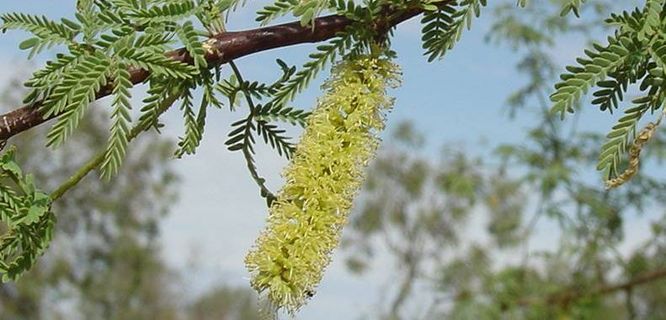How To Manage It?
Best practice management
Control is possible using chemical, mechanical and biological methods, and a combination (integrated management). Current research is investigating integration of traditional management practices (chemical and mechanical control) with fire, grazing management and biological control, which are more time- and cost-effective mechanisms. An integrated management strategy for Mesquite will vary with the infestation's characteristics, including its size, age, density and habitat. In general, multi-stemmed mesquites are harder to control than single-stemmed trees (CRC 2003).
Chemical control: The basal bark and cut-stump techniques are effective on mature trees. Seedlings can be controlled by spraying foliar herbicide over the entire plant. This is particularly effective for dealing with actively growing, dense stands of Mesquite up to 1.5 m tall (CRC 2003). Please see the Australian Pesticides and Veterinary Medicines Authority for chemical information http://www.apvma.gov.au .
Non-chemical control: Mechanical control techniques range from blade ploughing to grubbing and chaining. Mechanical control has varying levels of effectiveness depending on the size and species of the plant, but will kill Mesquite if the roots can be removed to a depth of 300 mm.
Fire can give good control of Mesquite, particularly Prosopis pallida. If necessary, mechanical control such as chaining can be used before burning to provide enough fuel to generate the heat required to kill Mesquite. Fire is relatively inexpensive and, even when it does not kill the entire plant, can reduce seed production by removing vegetation and killing seed lying on the ground surface. However, most of the other species of Mesquite are more resistant to fire, and resprout from the rootstock if the crown is removed by fire (CRC 2003).
Biological control: Mesquite has also been recognised as a target for biological control through a cross-jurisdictional government process. This allows activities to be undertaken to develop effective biological controls.
Research for the biocontrol of mesquite (also called algaroba) (Prosopis L. spp. (Fabaceae)) in Australia commenced in early 1990s beginning with testing of two seed-feeding bruchids, from a biocontrol program initiated in South Africa (Harvey et al 2023). Since this time, four species of insects have been released in Australia and include: the two seed-feeding bruchids (Algarobius bottimeri Kingsolver, Algarobius prosopis (Le Conte)) from North America, and a leaf-feeding psyllid (Prosopidopsylla flava Burckhardt) and leaf-tying moth (Evippe sp.) from Argentina (Harvey et al 2023). Of these, only the seed feeding bruchid (A. prosopis) and the leaf-tying moth have established. The leaf-tying moth is highly effective in suppressing the seed production and growth rate of mesquite, particularly in the Pilbara region of Western Australia. Its presence in NSW however is rare and its impact is somewhat limiting in the Northern Territory and Queensland (Harvey et al 2023). The seed feeding bruchid (A. prosopis) while widely established, exerts only limited population level regulation (van Klinken 2012; Winston et al. 2022).
For further information see the Mesquite Best Practice Manual (Osmond 2003) (available at https://www.weeds.org.au/WoNS/Mesquite/).
Does it have a biological control agent?
YES. Four biocontrol agents released: the seed-feeding bruchids (Algarobius bottimeri, Algarobius prosopis), a leaf-feeding psyllid (Prosopidopsylla flava) and leaf-tying moth (Evippe sp.) (Harvey, et al 2023).
When does it grow? (lifecycle/growth calendar)
Mesquite has a long life cycle. In its native range plants live at least 30 years, but one specimen in the Brisbane Botanical Gardens is over 115 years old.
Because Mesquite is found over such a large area, and consists of several species and hybrids, there is much variation in its growth calendar. Its seeds can germinate year round as long as the soil is moist. The young seedlings are generally slow growing as resources are invested into establishing the root system. This can be extensive in mature trees, in some cases exceeding a depth of 50 m (CRC 2003). However, while plants generally flower and fruit for the first time between two and five years old, some have been observed to produce pods within their first year (Osmond 2003). Where winters are cold, Mesquite may shed its leaves in late autumn or early winter and undergo a dormant period until early spring (CRC 2003).
Flowering in Mesquite occurs mainly in spring and early summer. The seed pods take two to three months to mature and generally drop in late summer. The seeds are dormant when dropped – the hard outer casing must be damaged to allow moisture into the seed before germination can occur. Animal consumption, fire or wet conditions are all ways of breaking the seed casing. If the seed casing is not broken, seeds lying in soil can remain viable for very long periods (CRC 2003).































